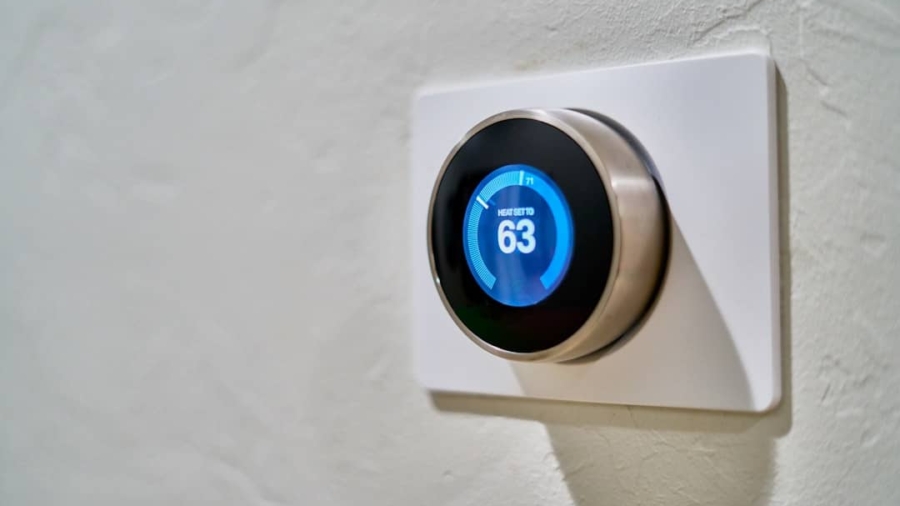The logistics industry is undergoing a significant transformation, driven by advancements in technology and the increasing demand for efficiency and reliability. At the forefront of this evolution is 5G technology, which promises to revolutionize how data is collected, analyzed, and utilized within the sector. Predictive maintenance, a proactive approach to equipment management, is becoming increasingly vital as companies seek to minimize downtime and optimize operational efficiency.
By leveraging the capabilities of 5G, logistics companies can enhance their predictive maintenance strategies, leading to improved asset management and reduced operational costs. 5G technology offers unprecedented speed, low latency, and the ability to connect a vast number of devices simultaneously. This connectivity is crucial for logistics operations that rely on real-time data to make informed decisions.
Predictive maintenance, which uses data analytics to predict equipment failures before they occur, can significantly benefit from the enhanced data transmission capabilities of 5G. As logistics companies adopt this technology, they can expect to see improvements in their maintenance practices, ultimately leading to a more resilient supply chain.
Key Takeaways
- 5G technology is revolutionizing the logistics industry by enabling predictive maintenance, which helps prevent equipment failures and reduces downtime.
- 5G plays a crucial role in improving data collection and analysis for predictive maintenance, allowing logistics companies to gather and process large amounts of data in real time.
- With 5G, real-time monitoring and decision-making in logistics become possible, leading to more efficient operations and better resource allocation.
- The impact of 5G on equipment and asset management in logistics is significant, as it allows for remote monitoring and control of assets, leading to cost savings and improved productivity.
- The integration of 5G and IoT enhances predictive maintenance in logistics by enabling seamless connectivity and communication between devices, leading to more accurate predictions and proactive maintenance.
The Role of 5G in Improving Data Collection and Analysis for Predictive Maintenance
One of the most significant advantages of 5G technology is its ability to facilitate rapid data collection and analysis. In logistics, where equipment and machinery are often spread across vast geographical areas, traditional data collection methods can be slow and cumbersome. With 5G, sensors embedded in equipment can transmit data in real-time, allowing for immediate analysis and response.
This capability enables logistics companies to monitor the health of their assets continuously, identifying potential issues before they escalate into costly failures. For instance, consider a fleet of delivery trucks equipped with IoT sensors that monitor engine performance, tire pressure, and fuel efficiency. With 5G connectivity, these sensors can send data back to a central system almost instantaneously.
This allows for advanced analytics to be applied, identifying patterns that may indicate an impending mechanical failure. By analyzing this data in real-time, logistics managers can schedule maintenance proactively, ensuring that vehicles remain operational and reducing the risk of unexpected breakdowns.
How 5G Enables Real-time Monitoring and Decision-making in Logistics

The low latency characteristic of 5G technology is a game-changer for real-time monitoring in logistics. In an industry where every second counts, the ability to receive and act on data without delay can significantly enhance operational efficiency. For example, if a sensor detects an anomaly in a piece of equipment, the information can be transmitted immediately to maintenance teams who can then assess the situation and take action without waiting for scheduled checks or manual reporting.
This real-time decision-making capability extends beyond just equipment monitoring. It also impacts inventory management and supply chain logistics. With 5G-enabled systems, logistics companies can track inventory levels in real-time across multiple locations.
This allows for dynamic adjustments to be made based on current stock levels and demand forecasts. For instance, if a warehouse is running low on a particular item, the system can automatically trigger a reorder process or reroute deliveries from other locations to meet customer needs promptly.
The Impact of 5G on Equipment and Asset Management in Logistics
The integration of 5G technology into logistics operations fundamentally alters how companies manage their equipment and assets. Enhanced connectivity allows for more sophisticated asset tracking systems that provide detailed insights into the location and condition of equipment at any given time. This level of visibility is crucial for optimizing asset utilization and ensuring that resources are allocated efficiently.
Moreover, with 5G’s ability to support a high density of connected devices, logistics companies can deploy a greater number of sensors across their operations without worrying about bandwidth limitations. This means that every piece of equipment can be monitored closely, providing a wealth of data that can be analyzed for trends and anomalies.
The Integration of 5G and IoT for Enhanced Predictive Maintenance in Logistics
The synergy between 5G technology and the Internet of Things (IoT) is particularly powerful in the context of predictive maintenance within logistics. IoT devices equipped with sensors can collect vast amounts of data from various sources—ranging from temperature readings in refrigerated trucks to vibration levels in conveyor belts. When combined with 5G’s high-speed connectivity, this data can be transmitted quickly and efficiently to centralized systems for analysis.
This integration allows logistics companies to create a comprehensive view of their operations. For instance, a distribution center could utilize IoT sensors to monitor not only the condition of its machinery but also environmental factors such as humidity and temperature that could affect product quality. By analyzing this data in conjunction with equipment performance metrics, companies can develop more accurate predictive maintenance schedules that take into account both mechanical wear and external conditions.
Challenges and Considerations in Implementing 5G for Predictive Maintenance in Logistics

Cost and Return on Investment
One significant concern is the cost associated with upgrading existing infrastructure to support 5G connectivity. Many logistics companies operate on tight margins, making it essential to carefully evaluate the return on investment for such upgrades. The cost of upgrading infrastructure, including hardware and software, can be prohibitively expensive, and companies must weigh the benefits of 5G technology against the costs of implementation.
Technical Challenges: Network Coverage and Reliability
Additionally, there are technical challenges related to network coverage and reliability. While urban areas may have robust 5G networks, rural regions—where many logistics operations take place—may still lack adequate coverage. This disparity can create gaps in data collection and monitoring capabilities, undermining the effectiveness of predictive maintenance strategies. Ensuring reliable and consistent network coverage is essential for the successful implementation of 5G technology in logistics.
Cybersecurity Risks and Interconnected Devices
Companies must also consider cybersecurity risks associated with increased connectivity; as more devices become interconnected, the potential for cyberattacks rises. With 5G technology, the risk of cyberattacks increases, and companies must implement robust cybersecurity measures to protect their systems and data. This includes ensuring that devices and systems are secure, implementing robust authentication and access controls, and regularly monitoring for potential threats.
Case Studies and Success Stories of 5G-enabled Predictive Maintenance in Logistics
Several companies have begun to explore the potential of 5G technology for predictive maintenance within their logistics operations, yielding promising results. For example, a major global shipping company implemented a 5G-enabled predictive maintenance system across its fleet of cargo ships. By equipping vessels with IoT sensors that monitor engine performance and other critical systems, the company was able to reduce unplanned downtime by over 30%.
The real-time data allowed engineers to address issues before they became critical failures, significantly improving operational efficiency. Another notable case involves a large retail chain that adopted 5G technology in its distribution centers. By integrating IoT sensors with 5G connectivity, the company achieved real-time visibility into its inventory management processes.
This enabled them to optimize stock levels dynamically based on demand fluctuations while also ensuring that equipment was maintained proactively based on usage patterns. As a result, they reported a reduction in operational costs by approximately 20% within the first year of implementation.
The Future of Predictive Maintenance in Logistics with 5G Technology
Looking ahead, the future of predictive maintenance in logistics appears bright with the continued evolution of 5G technology. As networks expand and become more reliable, logistics companies will increasingly leverage advanced analytics powered by artificial intelligence (AI) and machine learning (ML) alongside 5G connectivity. This combination will enable even more sophisticated predictive models that can account for a wider range of variables affecting equipment performance.
Moreover, as more devices become interconnected through IoT ecosystems supported by 5G networks, the potential for automation within logistics operations will grow exponentially. Automated systems could autonomously manage maintenance schedules based on real-time data analysis without human intervention, further enhancing efficiency and reducing costs. The integration of augmented reality (AR) tools could also play a role; technicians could receive real-time guidance through AR glasses while performing maintenance tasks based on live data streamed from connected devices.
In conclusion, as logistics companies continue to embrace 5G technology for predictive maintenance strategies, they will not only improve their operational efficiency but also enhance their overall competitiveness in an increasingly demanding market landscape. The convergence of these technologies heralds a new era for logistics—one characterized by agility, resilience, and innovation.
In a recent article on enicomp.com, the potential of the Samsung S22 Ultra in unlocking the power of the galaxy is explored. This technology could revolutionize the way predictive maintenance is conducted in logistics, especially with the advent of 5G connectivity. By leveraging the capabilities of the Samsung S22 Ultra and other cutting-edge devices, logistics companies can streamline their operations and improve efficiency. This article sheds light on the exciting possibilities that lie ahead for predictive maintenance in the logistics industry.
FAQs
What is 5G technology?
5G is the fifth generation of wireless technology that promises significantly faster data download and upload speeds, wider coverage, and more stable connections.
How does 5G impact predictive maintenance in logistics?
5G enables real-time data collection and analysis, allowing logistics companies to monitor the condition of their equipment and vehicles more effectively. This can lead to more accurate predictive maintenance, reducing downtime and costs.
What are the benefits of 5G for predictive maintenance in logistics?
Some benefits of 5G for predictive maintenance in logistics include improved equipment monitoring, faster data transmission, reduced maintenance costs, and increased operational efficiency.
How does 5G enable real-time monitoring for predictive maintenance in logistics?
5G’s high-speed and low-latency capabilities allow logistics companies to collect and analyze data from sensors and equipment in real time, enabling them to identify potential issues and perform maintenance before a breakdown occurs.
Are there any challenges in implementing 5G for predictive maintenance in logistics?
Challenges in implementing 5G for predictive maintenance in logistics may include the initial investment in 5G infrastructure, ensuring network coverage in remote areas, and addressing cybersecurity concerns related to increased connectivity.

